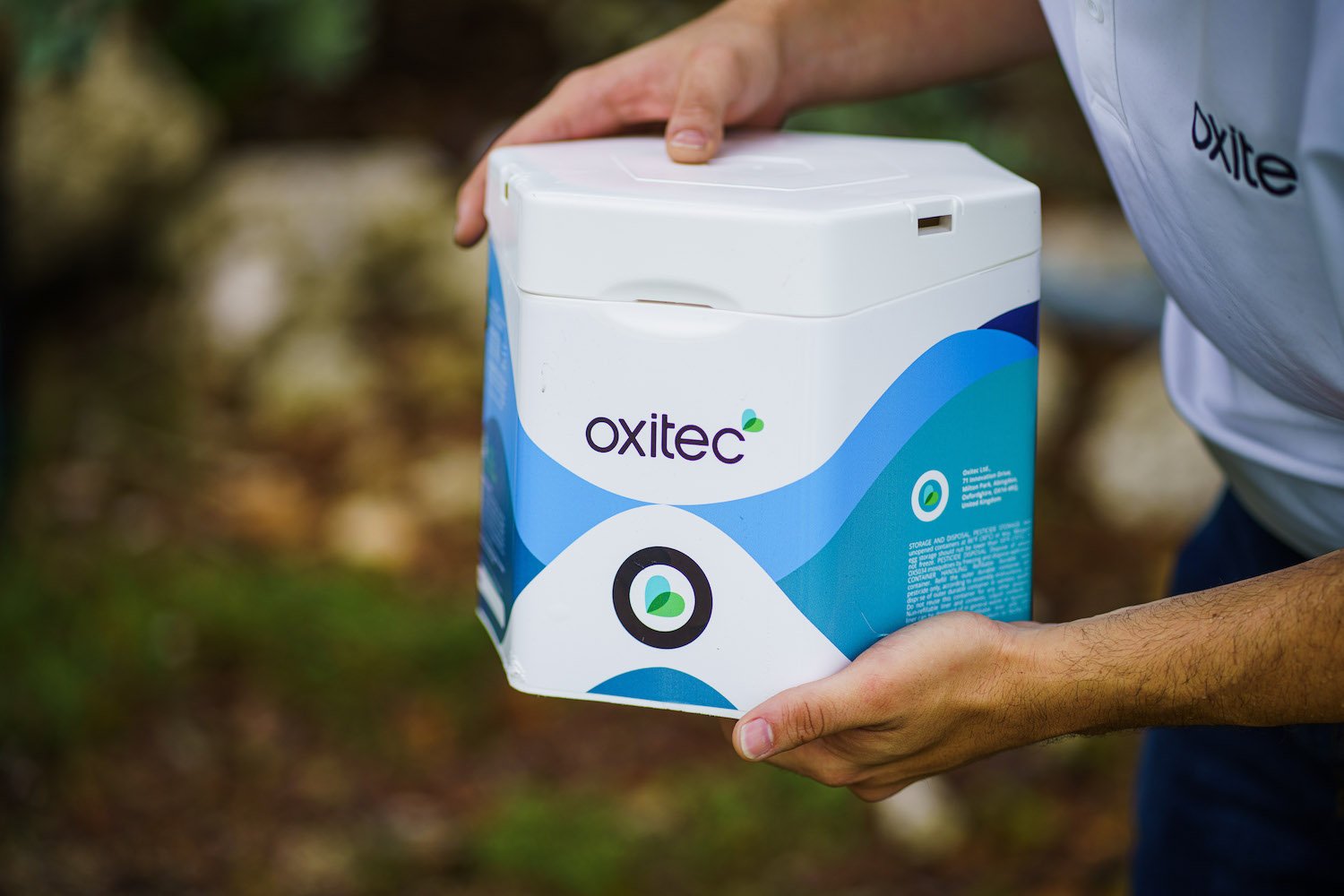+ Q: Why target the local invasive Aedes aegypti mosquito?
The local invasive Aedes aegypti mosquito makes up approximately 4% of the mosquito population in the Florida Keys but is responsible for virtually all mosquito-borne diseases transmitted to humans. This species of mosquito transmits dengue, Zika, yellow fever and other human viral diseases, and can transmit heartworm and other potentially deadly diseases to pets and other animals.
+ Q: How does the Oxitec technology work?
We use genetics to provide two useful traits in our insects. A self-limiting gene allows us to release male-only adult mosquitoes into the environment, which mate with local invasive Aedes aegypti females, and the self-limiting gene prevents female offspring from surviving. With sustained releases of self-limiting male mosquitoes, the number of pest females in the population is reduced, and the local invasive Aedes aegypti population declines. Our insects also carry a fluorescent marker gene which, when collected from traps from the field and viewed under special filters, allows us to distinguish the self-limiting insects from local invasive counterparts, this improves efficiency and aids monitoring.
+ Q. Why do only female offspring die?
It is only female Aedes aegypti that bite humans and transmit diseases such as dengue and Zika viruses. Oxitec’s mosquitoes carry a self-limiting gene that is only active in females, therefore preventing females from surviving; males are not affected by this gene, so can survive as normal. This results in male-only releases of mosquitoes.
+ Q. What are the risks if a female Oxitec mosquito bites someone?
We release only male mosquitoes because the self-limiting gene prevents females from surviving. However, even if someone were to be bitten by a female Oxitec mosquito, for example in our mosquito production facility, the bite of a female Oxitec mosquito is the same as the bite of a non-infectious, wild Aedes aegypti. The proteins of the two introduced genes are not expressed in the mosquito saliva, so a person bitten by a female mosquito would not be exposed to these proteins. In addition, these proteins are non-toxic and non-allergenic.
+ Q. Are self-limiting mosquitoes an environmentally sustainable vector control tool?
Yes - because self-limiting mosquitoes work by finding and mating with invasive females, the suppression effect is highly targeted to this species of mosquito. This specificity leaves non-target species, such as beneficial insects like bees and butterflies, unharmed. As the self-limiting genes dilutes from the environment in just a few generations, there is no long-lasting presence or effect once treatment has been stopped.
+ Q. Why do you still need trials if everything is already proven safe?
The EPA approved the technology as safe for the purposes of the Experimental Use Permit (EUP), the EUP itself is designed to assess biosafety and efficacy of the Oxitec male mosquito for commercial use in the US environment. These steps are part of the defined process towards registration of a new biopesticide under the Federal Insecticide, Rodenticide, and Fungicide Act (FIFRA).
+ Q. Why haven’t you sought consent from residents for this project?
The EPA ruled clearly on this subject: “EPA does not find that the research involved with Oxitec’s release of male OX5034 mosquitoes meets the regulatory definition of research involving human subjects…therefore the requirements of EPA’s human studies rule do not apply to this research proposed by Oxitec.” (p134, Response to Comments.)
Oxitec is not testing on humans and this project is not introducing risk to humans, animals, or the environment, as stated by the EPA. This project will only be releasing non-biting males that do not bite humans. Oxitec is demonstrating the efficacy of its mosquito technology to control local invasive Aedes aegypti mosquitoes. This is analogous to other control products evaluated for use against mosquitoes, such as chemical insecticides.
Oxitec has received outstanding support from Keys residents. Oxitec has obtained consent from residents hosting boxes and traps. Oxitec’s technology received support in 31 of 33 Monroe County precincts in a 2016 referendum, highlighting a broad base of support that far surpassed any political candidate on the ballot.
+ Q. What about risks associated with the presence of tetracycline antibiotics in the environment?
EPA assessed this possibility and concluded:
“Several lines of evidence including a survey of environmental levels of tetracycline, tetracycline dose-response testing of OX5034 females, and oviposition behavior of Aedes aegypti, indicate that the risk of hemizygous OX5034 female mosquitoes emerging in the environment due to high levels of tetracycline is low. Pilot site location restrictions using known Aedes aegypti dispersal distances to limit exposure to locations with higher probabilities of containing tetracycline would further reduce the likelihood of OX5034 females in the environment to the point where the risk would be considered negligible.”
This is a summary of a much more extensive discussion of this issue, which is available on p31-34 of the Human Health and Environmental Risk Assessment. EPA has also included guidelines on the project locations: releases will not be carried out within 500 m of citrus groves (where oxytetracycline could potentially be used for control of citrus greening) or within 500 m of municipal wastewater treatment plants (where pharmaceutical-use doxycycline might be present in effluent) (see EPA’s approval of Oxitec’s proposed pilot project).
+ Q. Why not just use insecticides?
Insecticides are a valuable option available to mosquito control authorities and consumers for a broad range of mosquito species, but they aren’t a complete solution. Over-reliance on this vector control method is not sustainable and has led to the development of resistance to insecticides. Insects are also more likely to develop resistance against a single mode of action versus multiple modes of action. There is an increasing need for new vector control tools that would allow an integrated pest management approach to be used, which can deploy a suite of management options to optimize protection against disease-carrying mosquitoes and to maximize sustainability.
+ Q. What about the news headlines in 2019 relating to hybrid GM mosquitoes?
News headlines in 2019 highlighted a paper which contained inaccurate, false, unverified and misleading information about a previous Oxitec’s product. The publishers, Nature and Scientific Reports, issued an Editorial Expression of Concern for this Article, which validated Oxitec’s misgivings in several areas, including the authors’ claims, interpretation of the data, and speculation. It also validated claims that some of the named authors had not approved the final version that was submitted for publication. Scientific Report’s Editorial Expression of Concern for Evans et al., 2020.
FKMCD – Oxitec Mosquito Project Information:
Email: florida@oxitec.com; questions@keysmosquito.org
Phone: +1-888-308-1859
Press Inquiries:
+1-202-792-3080 press@oxitec.com

